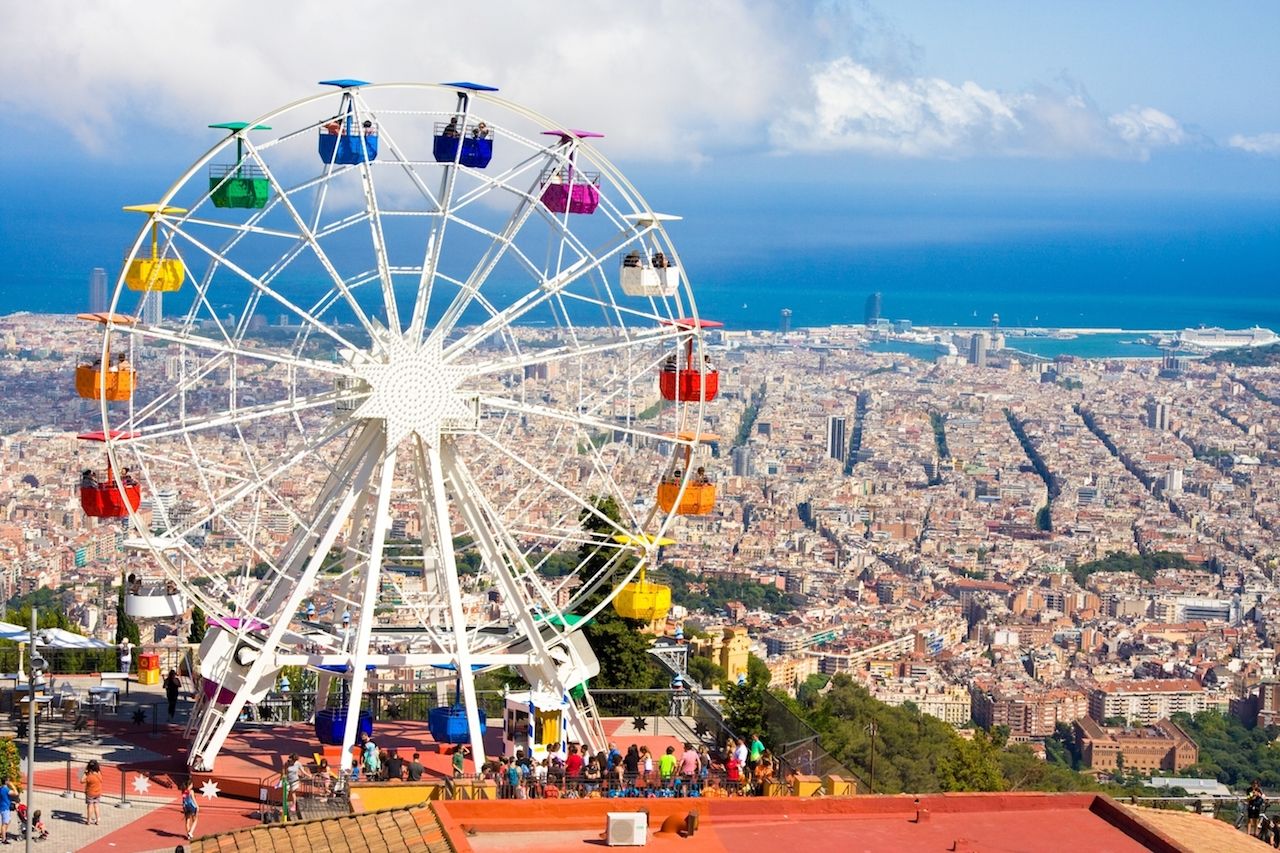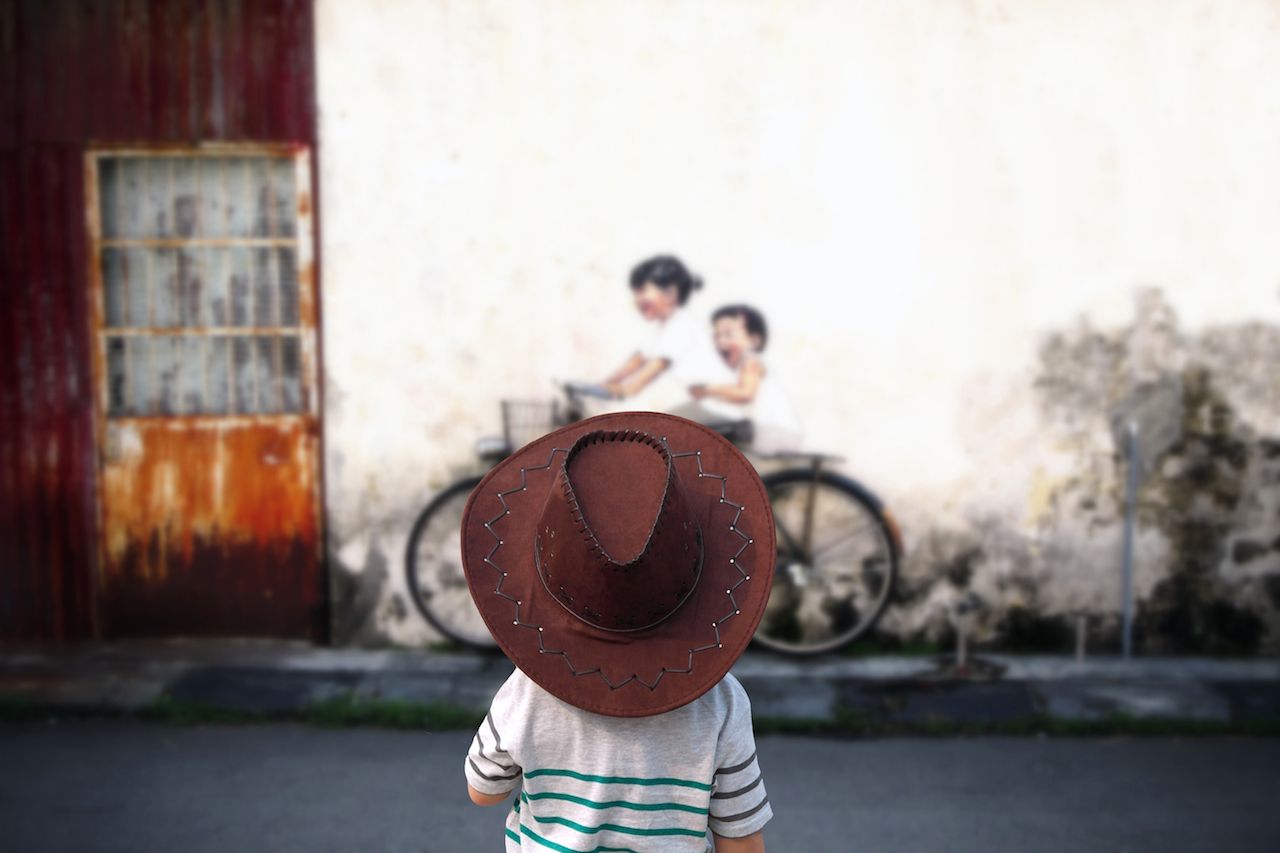Maybe you vowed to keep traveling after becoming a parent. You know travel broadens the mind and makes kids smarter. When your oldest kid was younger, maybe you even let them miss school to make room for worthwhile trips. But if your kids’ ages span the spectrum from toddler to teen — or somewhere in between — planning a vacation gets more complex. Your kids may have diverse interests, attention spans, sleeping schedules, and the rest. Here’s how to make travel with different-aged kids work.

1. Pick the right destination.

Photo: Irina Papoyan/Shutterstock
Try to choose a destination that offers activities for multiple age ranges. For example, if you want to visit Spain next summer, Madrid may not be the best option. Its hipster neighborhoods may inspire teens, but Madrid is short on activities for the younger set. Barcelona, on the other hand, doesn’t just have a big city vibe of its own. It’s also on the Mediterranean coast, so you after visiting iconic sights like the Sagrada Familia, you can take the family to the beach. Alternatively, should you opt for a beach vacation that’s certain to entertain younger kids, be sure it has something for your older child to do, like take surf lessons.
2. Involve kids in the planning.
The best way to ensure your children enjoy an upcoming trip is to have them help you plan it. Create a general travel outline and let them fill out the spaces in between. By feeling like they’ve had a say in the itinerary, kids will be predisposed to like what comes up.
Let your older kids do their own research on what to see and do, too. They’ll feel more invested in the trip. And the more you know about something, the more interesting it is. Moreover, if they had a hand in planning the day ahead, they may be more willing to wake up early for it.
Once traveling, keep reminding the kids of that itinerary. That way, if you’re doing something more big-kid oriented one day, the little one can look forward to a fun activity tailor-made for them the next day.
3. Divide and conquer.

Photo: Pravokrugulnik/Shutterstock
If you’re traveling with a parental partner, dividing and conquering should be a go-to strategy. You don’t all have to hit up the playground — although we think discovering playgrounds in other cities and countries can be pretty cool. While one of you is watching your tyke tackle an unfamiliar climbing structure, the other one can take an older kid to a skateboard shop — or even a skateboard park.
As we’ve said in encouraging you to travel even with young kids, one adult can relax with a good book back at your accommodations during naptime. The other parent can explore with your older child; the next day, you can switch off.
4. Do something fun for each kid every day.
It’s okay if a day’s main pursuit is better suited for a particular age group, as long as you add even a small activity the other aged child(ren) will enjoy. For example, if you’re in San Francisco, your teen may be impressed by the SF Museum of Modern Art — if only because they know that it’s a hotspot for local teens’ Instagram pics. (It’s free for kids under 18, after all.)
While we do have some pro tips for you on taking kids to museums, you should still reward the younger one’s patience after you leave the SFMOMA. In this case, you can head across the street to Yerba Buena Gardens for a spin on their old-fashioned carousel.
Or, if you’ve spent the morning at the San Francisco Zoo, stop by the groovy Amoeba record store on Haight Street in the afternoon. That way, at dinner every night of your trip, you can ask the kids what they enjoyed about the day — and they’ll each have something good to say.
5. Ride bicycles, boats, chairlifts, anything.

Photo: Beatrice Sirinuntananon/Shutterstock
Some activities appeal to people of pretty much any age. Riding bikes is one of those. Plenty of US cities are easy to explore on two wheels. So are many in Europe, where cycling is part of the culture. Even in Kyoto, Japan, checking out the temples becomes more interesting to kids of all ages if you get there on a bike.
Beyond bicycles, other fun modes of transport include everything from boat taxis in Venice and ferries in Stockholm to chairlifts in New Zealand and pedicabs anywhere.
6. Go up.
Like riding bikes, kids of all ages like going up. If there’s a height to ascend, do so. You’ll enjoy the elevated perspective on your destination. And unless they’re afraid of heights, kids love looking down on things.
In Chicago, the Willis Tower Skydeck, standing on glass with 110 stories of air below you enthralls even the youngest family member. Likewise, the TV tower in Berlin or the gondola in Quito, Ecuador, would be boring activities from a little kid’s point of view, except they’re fun because you’re way up there.
Some heights, though, like New York’s Empire State Building, may involve too long a wait in line — and too much money — to be worthwhile. If you’re in Manhattan, walk up the spiral staircase at the end of the Highline instead.
7. Flee the crowds.

Photo: Inu/Shutterstock
There’s a cost-benefit equation to waiting in long lines. When not everyone in the family is excited by what comes at the end of that queue — a likely scenario when you have kids of very different ages and interests — the balance tips in favor of blowing out of there. Fast.
The same goes for lingering in crowded parts of town. The magic of Venice doesn’t stop at St. Mark’s Square, which is jammed with cruise-shippers every summer day. Leave the city center and instead wander the backstreets of neighborhoods like Dorsoduro. Only the most cynical child won’t be amazed to find houses with their own boats, where elsewhere they’d see a car. Don’t think of your time in outlying neighborhoods as missing the top sights. Instead, regard it as a chance to get a more authentic picture of a place.
8. Consider sleeping arrangements.
Little ones may wake at dawn while teens prefer to rise at the crack of noon. On days when you have early morning plans, a noisy toddler may do a good job of rousing your teenager. That, however, is a risky strategy.
You don’t want to start the day with a crabby, resentful older kid. If you at least give the younger child breakfast first, the older kid will feel they got to sleep in a bit. If you’re all in one hotel room, one parent should be prepared to get up early and make a swift getaway with the little one.
Conversely, at night, let the older child watch a movie on their phone in the lobby — with or without a nearby parent, depending on their age — while the younger kid gets settled to sleep. If you have two hotel rooms, you may want to split up kids and parents to accommodate the dissimilar sleep patterns. Renting an Airbnb so you’re not all sharing a single room or two can resolve the sleep-time dilemma altogether.
9. Be creative.

Photo: shun2u/Shutterstock
Another good thing about letting older kids do some research is they may come up with ideas you wouldn’t have thought of — like strolling the hipster shops of Seattle’s Capitol Hill neighborhood (which has also has leafy playgrounds for the siblings) or checking out the graffiti and art-strewn John Lennon Wall in Prague.
You can also be creative and add in different activities. We’ve already mentioned riding bikes. Likewise, unless your kids are too young for long walks, consider hiking. Treks give kids the fresh air they crave, often come with great views, and are an all-family activity. It’s also easy to hike near many cities in Europe and the US.
10. Don’t underestimate your kids.
Too often, people don’t travel with their kids because they anticipate it not working out. You never know until you try. In new contexts, kids may be more adaptable. You’ve probably already seen how your kid eats food at a friend’s house they won’t eat at home, or how your kid behaves better with grandma.
Take them traveling. You may find the older kid stepping in to help out and the younger one growing up just a little bit.
11. Eat ice cream.

Photo: Alena Ozerova/Shutterstock
While the best release for most young kids is running around a playground or park, that’s not always possible. Your next best option may be a special treat — like ice cream, crepes, or the local pastry. Truth is, older kids love ice cream just as much as the little ones, and we’re willing to bet you do too.